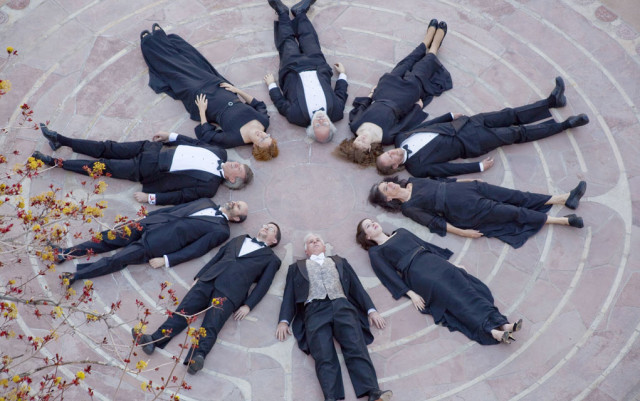
In the history of European choral music, there are two major works that were composed for 40 different voice parts.
Yes, that’s four-zero, 40 parts, which is really a lot, and the size alone has made these Brobdingnagian works well known. For the same reason, they are not often heard live, but both will be performed on the same concert by Boulder’s Ars Nova Singers and director Thomas Edward Morgan.
Titled “Renaissance Retrospective,” the concert will be performed in Denver on Friday and in Boulder on Saturday.
Both works were written in the 16th century, and indeed one probably inspired the other. The first was Ecce beatam lucem by Italian composer Alessandro Striggio from the 1560s. Shortly after it was introduced in England in that decade, it was followed by the more famous Spem in alium by English composer Thomas Tallis. Those two works serve as bookends on the program, which opens with Striggio and closes with Tallis, recalling the order in which they were written.
In between, Ars Nova will perform music by Carlo Gesualdo and Orazio Vecchi, Italian composers who were working a couple of decades after Striggio and Tallis. All the music will be sung a capella.
“This is a wonderful opportunity to hear [the Striggio and Tallis] pieces performed live,” Morgan says. “It’s rare, especially to hear both of them together.”
To achieve the total of 40 voice parts, both pieces divide the choir into multiple groups. “Striggio imagined the 40 parts probably as five eight-part choirs,” Morgan explains. “The Tallis piece is a little different, for eight five-part choirs.”
In the late Renaissance period, the presence of multiple choirs always suggests that singers would be placed in different spaces around a church or performance area, and that seems to be the case for both works. “It’s clear in the construction of the pieces that the composers were thinking about how the sound moves in a room,” Morgan says. “That’s not something that we get again until the 20th century.”
This practice is connected to St. Mark’s Basilica in Venice, where the presence of multiple choir lofts gave composers the opportunity to have music coming from various directions. But “this is really another level beyond that,” Morgan says.
The spatial basis of the music is especially interesting in the case of the Tallis, which may have been performed at Nonsuch Palace, an extravagant building project that was started by Henry VIII, completed after his death and later destroyed. Nonsuch included an octagonal banquet hall with eight balconies above the main floor that would have been ideal for the eight separate choirs.
“We will perform both of these pieces in almost a complete circle, surrounding the audience,” Morgan says. “It is very much a surround sound experience, and that’s so much a part of the construction of the pieces that it’s really critical to perform them that way.”
While both pieces have 40 separate parts, they are in some ways quite different. “Tallis relies on the very initial gesture that starts with two voices and goes all the way around the ensemble with each individual voice entering separately,” Morgan says. “Striggio’s work in contrast starts with eight voices together, and the choirs are already laid out in more of a multi-choir presentation.”
This makes the Tallis easier for listeners to follow, because the separate lines are easier to hear, but harder for the singers, because they have to count so carefully. The Striggio, in contrast, is more of a massed sound with less differentiation among the parts, making it easier for the singers to know where they are but a little harder for listeners to follow.
Carlo Gesualdo is best known to historians for two things: the brutal murder of his wife and her lover, and the composition of highly expressive madrigals that seem to anticipate the chromatic harmonic language of the late 19th century. He also wrote a number of scared works, including a set of Responsoria (Responsories) for Holy Week, published in 1611. Several of the Responsoria will be performed by Ars Nova.
“In many respects they are as harmonically adventurous as the madrigals,” Morgan says. “These are a little more stately, I would say, because they were written for the church. They are very expressive, but a little more formal.
“Over the course of our history we’ve performed all of the Responsoria. It’s music that I find particularly appealing, both because of their musical content, with reallyimaginative harmonic constructions that Gesualdo gets into, but also because they’re so expressive.
“I don’t think there’s anything quite like it in the repertoire.”
On the Bill: Renaissance Retrospective: Music for Many Voices. 7:30 p.m. Friday, Feb. 19, St. Paul’s Lutheran Church, 1600 Grant St., Denver. 7:30 p.m. Saturday, Feb. 20, St. John’s Episcopal Church, 1419 Pine St., Boulder. Tickets: 1-800-838-3006, or online at arsnovasingers.org/concerts/














